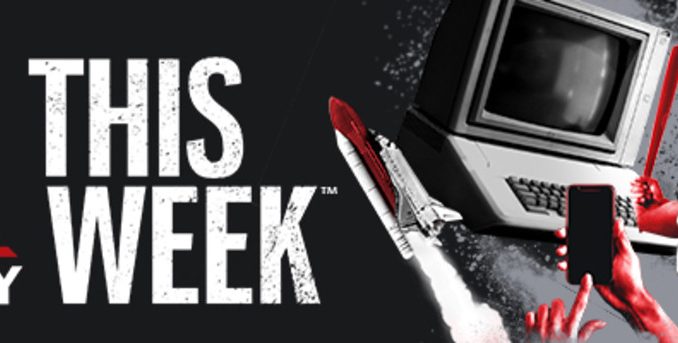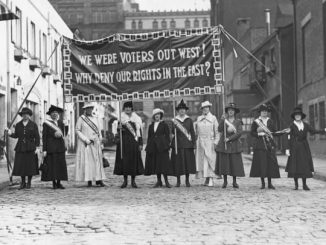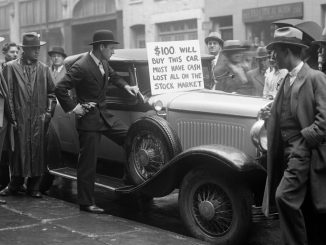
During a break in the action of Super Bowl XVIII on January 22nd, 1984, audiences first see a commercial that is now widely agreed to be one of the most powerful and effective of all time. Apple’s “1984” spot, featuring a young woman throwing a sledgehammer through a screen on which a Big Brother-like figure preaches about “the unification of thought,” got people around the United States talking and heralded a new age for Apple, consumer technology and advertising.
LISTEN NOW: HISTORY This Week. Episode 3: The Apple Ad That Changed the World
The ad was directed by Ridley Scott, who directed the genre-defining dystopian science fiction film Blade Runner in 1982. The spot was in a similar vein, depicting a bleak and monocrhome future where a crowd of bald extras—many of them actual skinheads from the streets of London—stood before an enormous screen broadcasting a message of conformity. A runner enters, pursued by police, and hurls the hammer at the screen, destroying it just as the Big Brother figure announces “We shall prevail!” The text in the last shot makes the references to George Orwell explicit: “On January 24th, Apple Computer will introduce Macintosh. And you’ll see why 1984 won’t be like 1984.”
Apple co-founder Steve Jobs loved the ad, but Apple’s board did not. They asked the agency that produced it, Chiat/Day, to sell back the time they had purchased for the ad, and “1984” only aired because Chiat/Day resorted to subterfuge, intentionally failing to sell back the time. It was the right decision: the ad achieved every company’s dream of becoming news itself, receiving free replays on news broadcasts the next day. Super Bowl ads were already big business, but many in the advertising world point to “1984” as the moment when the big game became a venue for innovative, marquee ads, which soon became e a major part of the overall spectacle of the Super Bowl. The spot also cemented Apple’s reputation for being iconoclastic, disruptive and forward-thinking, an image that has been central to its brand ever since. By telling a somewhat high-minded story and barely mentioning the product it was selling—no computers appear in the ad—it also helped establish that bolder, less literal advertising could be just as effective, if not more so, than simpler commercials.
READ MORE: They Can’t All Be iPhones: The Story of Apple’s Forgotten Flop






Be the first to comment